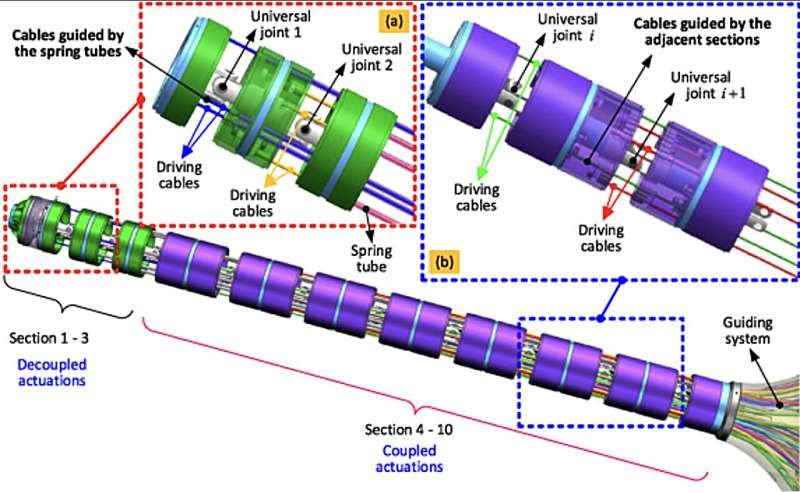December 27, 2023 feature
This article has been reviewed according to Science X's editorial process and policies. Editors have highlighted the following attributes while ensuring the content's credibility:
fact-checked
peer-reviewed publication
trusted source
proofread
A new strategy to regulate the stiffness of snake-inspired robots

Robotic systems inspired by nature can help to efficiently tackle a wide range of problems, ranging from navigating complex environments to seamlessly completing missions as a team. In recent years, roboticists have created a growing number of bio-inspired systems designed to replicate the body structure and movements of various animals, including snakes.
Snake-like robots could have various advantages over other systems with more conventional body structures. Due to their flexible body and sliding motions, they could reach small and confined areas that would otherwise be difficult to access, for instance moving inside pipes, mines, and in other challenging environments.
Despite their potential, so far snake robots have not been successfully deployed on a large-scale. This is in part due to difficulties encountered when trying to effectively modulate these systems' stiffness, allowing there to perform desired motions and reach target positions with high precision.
Researchers at Lancaster University, Beijing Institute of Technology and North China University of Technology recently set out to develop a new design strategy that could help to better regulate the stiffness of snake robots. Their proposed method, outlined in the journal Bioinspiration & Biomimetics, was applied to the development of a snake-like robotic arm with 20 degrees of freedom (DoF).
"Snake robots have been widely used in challenging environments, such as confined spaces," Nan Ma, Haqin Zhou and their colleagues wrote in their paper. "However, most existing snake robots with large length/diameter ratios have low stiffness, and this limits their accuracy and utility. To remedy this, a novel 'macro–micro' structure aided by a new comprehensive stiffness regulation strategy is proposed in this paper."
The macro–micro structure devised by this research team can improve the positional accuracy of snake-like robots as they are navigating confined spaces, both above and under the ground. This structure is accompanied by a newly developed, comprehensive strategy to regulate the robot's stiffness, as well as a kinetostatic model designed to estimate errors.
"The internal friction, variation of cable stiffness as a function of tension, and their effects on the structural stiffness of the snake arm under different configurations have been incorporated into the model to increase the modeling accuracy," Ma, Zhou and their colleagues wrote. "Finally, the proposed models were validated experimentally on a physical prototype and control system (error: 4.3% and 2.5% for straight and curved configurations, respectively)."
Ma, Zhou and their colleagues used their proposed design to develop a prototype system, which they then evaluated in a series of initial tests. Their findings were highly promising, as their strategy enabled them to adjust the tension of the cables driving the snake-like arm's motions by an average of 183.4%.
In the future, this recent study could inform the development of better performing snake-inspired robotic systems, which can be modulated with greater precision and can thus better complete missions in complex and highly confined environments. These robots could prove to be incredibly valuable for assisting human agents during search and rescue operations, to monitor underground environments, and for countless other advanced real-world applications.
More information: Nan Ma et al, Comprehensive stiffness regulation on multi-section snake robot with considering the parasite motion and friction effects, Bioinspiration & Biomimetics (2023). DOI: 10.1088/1748-3190/ad0ffc
© 2023 Science X Network



















